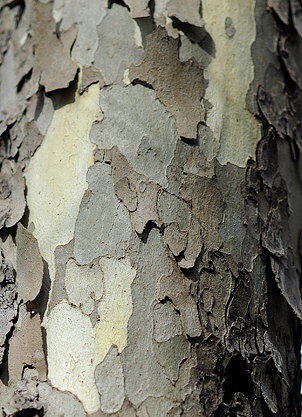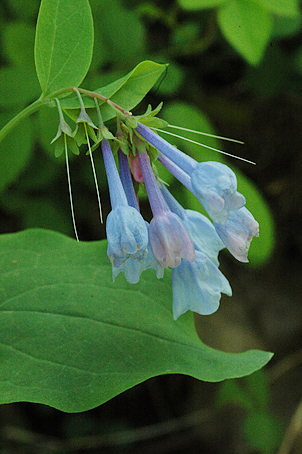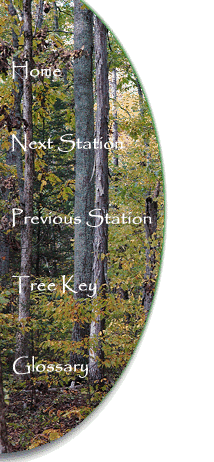| |
|
| |
 |
| |
American Sycamore Leaf |
Identification:
The leaves are alternate,
simple and 5 inches to 8 inches long, green
and shiny above, whitish and hairy below.
Venation is
palmate.
The base of the petiole completely encloses the bud.
| |
|
 |
|
|
American Sycamore Bark |
The bark of the American Sycamore is
quite distinctive and beautiful in all seasons. The bark is
reddish-brown to gray when young, and thin and flaky. As the
outer bark flakes off, it exposes the white or greenish inner bark.
The twigs of the American Sycamore
are brown to orange-brown, smooth and shiny. The stipule
scar encloses the bud.
This species is
monoecious, with
both male and female flowers appearing in separate rounded clusters
in the spring.
Other Uses
and Lore:
John James Audubon once wrote about observing
thousands of chimney swifts descending into a huge hollow sycamore
to use it as a roost. He returned early the following morning to
watch them exit. The swifts came pouring out in a black continuous
stream that lasted more than thirty minutes. Many
other species of wildlife use the cavities in these
trees, including many mammals.
Eastern screech owls roost and nest quite often in the cavities of
sycamores found along streams. The seeds were a favorite of the now
extinct Carolina parakeet.
The wood’s spiral grain makes it difficult to split,
and it is quite tough. It has been used for butcher’s blocks, cigar
boxes, shipping crates. It has also been used in musical
instruments and panels for Pullman cars in passenger trains.
The
Stones River
 |
| Virginia
Bluebell |
While you're
here, stop for a moment and take a look at the Stones River below
Station Twelve. Along the banks of the Stones you may find a
patch of Virginia Bluebells. These flowers are both beautiful
and very fragrant. Look for neotropical migrant birds in the
brushy areas along the river. Predators like the Cooper's Hawk
sometimes fly down the river channel looking for prey. From
this point you will be retracing your steps to return to the
trailhead.
|

